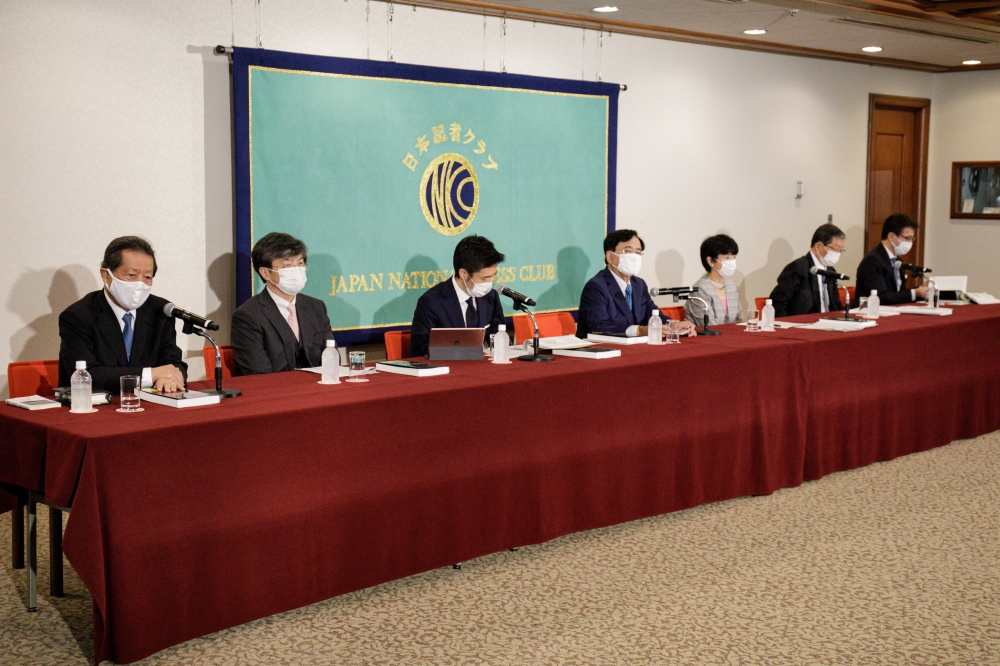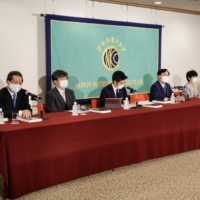Within a year, the Japanese government has issued two states of emergency over the COVID-19 pandemic under two prime ministers: Shinzo Abe and then Yoshihide Suga. When the Abe administration lifted the state of emergency last May, Abe attributed Japan’s success in keeping infections and deaths lower than in other major industrialized countries to what he called the “Japan model” of dealing with the crisis. The “Japan model” can properly be declared a model only if its efforts to bring infections under control and stabilize the economy work simultaneously. In consideration of this, during the first half of 2020, what effects did Japan’s countermeasures bring about? Which policies did not work? What remains uncertain?
To review Japan’s preparedness and response to the COVID-19 pandemic, the Asia Pacific Initiative (API), an independent global think tank, launched the Independent Investigation Commission on the Japanese Government’s Response to COVID-19.
Last week, API published the English-language version of the commission’s “Report on Best Practices and Lessons Learned” on its site at https://apinitiative.org/en/project/covid19/.
In October, API published the Japanese-language version and submitted it to Suga on Oct. 8. The commission conducted 102 interviews with 84 government officials and experts, including Abe; Suga, who was chief cabinet secretary before becoming prime minister; Katsunobu Kato, who was health minister before becoming chief cabinet secretary; as well as numerous other senior government officials who provided insight on the background of the events.
The report revealed some best practices and lessons learned.
First, the Japanese government did not anticipate severe pandemics like COVID-19 and failed to consider possible public health crises, including the worst-case scenario. The PCR testing capacity was initially limited to about 300 people per day. Japan, in its initial response, thus limited PCR tests to people with a high risk of developing severe symptoms to make the best use of its scarce testing resources. Japan prioritized to prevent a collapsing health care system from raising the mortality rate.
Second, Japan adopted a cluster-based approach through retrospective contact tracing. Local public health centers focused on dealing with clusters, as the government’s expert team found that COVID-19 transmission could be suppressed by preventing the formation of clusters. Japan’s universal health care system and public health infrastructure allowed for highly effective contact tracing. However, contact tracers were not connected digitally; most doctors used fax machines to report to public health centers. Looking back on how the government struggled to execute its COVID-19 policy, Health Minister Kato said the delay in the nation’s digital transformation was the biggest challenge that hampered the government’s smooth policy implementation.
Third, the campaign to avoid the “Three Cs” — closed spaces, crowded places and close-contact settings — was one of the most successful examples of communicating risk. The Three Cs summed up the infection risk in an easily understandable way to urge people to change their daily behaviors.
Fourth, elderly care facilities took countermeasures swiftly against COVID-19, as they prepared for and responded to infectious diseases every year. Since the end of January 2020, the Ministry of Health, Labor and Welfare has provided guidance and early warnings. The ministry urged those facilities to be proactive in preparing for COVID-19, for instance by limiting visits and managing patients in separate rooms. Such guidance worked in reducing the mortality rate in Japan, although it has the oldest population in the world.
Overall, Japan’s response to the first wave of COVID-19 infections had decent results compared to other countries — both in terms of preventing the spread of infections and in containing the damage to the economy. Though it is not fair to dismiss its measures as a failure, it also is not appropriate to applaud them as a success.
We have to learn from this painful experience. We also have to be reminded that the lessons learned from Japan’s response to COVID-19 had already been pointed out a decade ago when the H1N1 pandemic hit the country. The whole nation indeed forgot those lessons once the danger had passed. We should tackle the current third wave based on the best practices and lessons we learned from 2020.
For more information, please visit https://apinitiative.org/en/project/covid19/





















With your current subscription plan you can comment on stories. However, before writing your first comment, please create a display name in the Profile section of your subscriber account page.